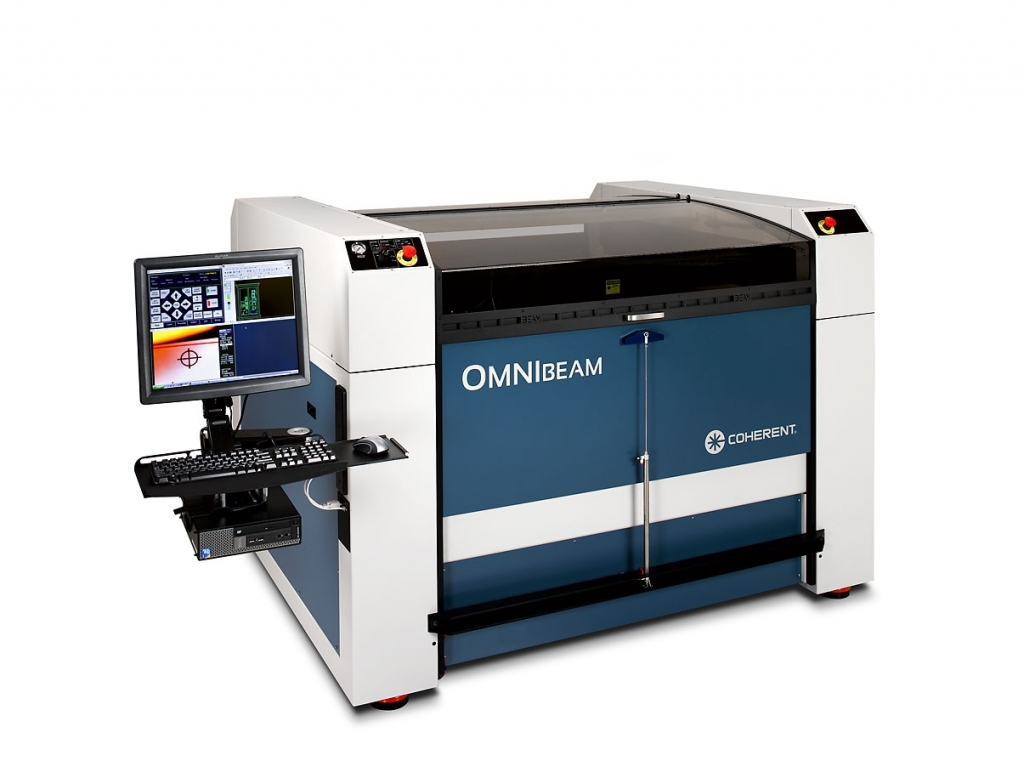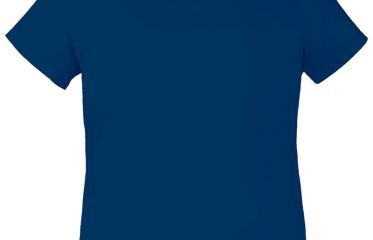Graphics Printing
Published
11 years agoon

Digital imaging in the screenmaking department and wide-format inkjet printers on the production floor have enabled graphics screen printers to enter new markets and take on a wide array of jobs profitably, including prototypes and one-off pieces. But what’s available when it comes to finishing the short-run work and handling the big job runs? Let’s take a look at digital and laser cutters, two solutions for finishing graphics printed on a vast assortment of substrates and in just about any quantity.
Digital imaging in the screenmaking department and wide-format inkjet printers on the production floor have enabled graphics screen printers to enter new markets and take on a wide array of jobs profitably, including prototypes and one-off pieces. But what’s available when it comes to finishing the short-run work and handling the big job runs? Let’s take a look at digital and laser cutters, two solutions for finishing graphics printed on a vast assortment of substrates and in just about any quantity.
What are digital cutters?
Digitally controlled cutting and routing systems are available in a variety of configurations. Drum cutters, or roll-fed cutting plotters, are often best suited to kiss-cutting thin, flexible materials that have liners or backing. Self-adhesive vinyl is an example. High-end models may be equipped with optical systems for registering cutting paths to printed graphics.
Another type of digitally controlled cutter is the CNC router, which is common in the sign industry. Computer numeric control (CNC) routers are geared toward straight or three-dimensional cutting and ideally suited for use with rigid, dense, thick materials—wood, plastic, foam board, and non-ferrous metals, for example. CNC routers are typically equipped with 3- to 10-HP spindles and a wide range of collet sizes. Cut-to-print registration is mostly set manually or mechanically; optical registration may be available. Loading and unloading are also commonly manual processes. Clamping and/or vacuum systems handle for material hold-down.
CNC routing involves removing material along a cut path as wide as the router bit being used. The process can be somewhat slow, and it produces quite a bit of dust. Options are available for dust extraction and debris removal. Add-ons for automation include tool changers, tool calibration, misting/lubricating devices (for metal processing), and some knife attachments.
Flatbed cutters round out the category of digitally controlled systems. These cutters combine high-speed operation with several options for tooling and automated material handling. Flatbed cutters, also known as cutting tables or XY or XYZ cutters, feature a beam or gantry that moves along the X-axis (or length of the table), while the toolhead moves along the beam and covers the width of the table, or Y-axis. The Z-axis refers to tool or cutting depth.
Toolheads and inserts can be attached singly, or in combination, for applications that require kiss-cutting/through-cutting, cutting/creasing/scoring, cutting/routing, and other functions. These devices can process materials such as vinyl, film, paper, carton, corrugated and foam boards, multi-layered materials, and all types of hard and soft plastics. Maximum substrate thickness is typically around 2 in. A networkable, integrated workstation and built-in control panel are generally included for machine operation, and a vacuum system secures materials.
Fully automated operation is possible. Material-handling systems are available for roll-fed, sheet-fed, and board materials. Some models feature a combination roll-off/conveyor system and optional rewind, which allows for automatic material advancing from rolls. A conveyor belt also is an essential component of some automatic sheet- and board-loading/unloading systems.
Many flatbed cutters can be equipped with advanced registration systems that involve optics or other types of hardware or software to compensate for distortions that occur with different printing methods. Linear distortion—that is, uniform shrinkage or stretch—and non-uniform distortion, which occurs when different areas of the graphic shrink or expand at different rates, are the most common types. Non-uniform distortion is most often found in screen-printed graphics, while most digitally printed graphics present linear distortions only—unless they’re applied or laminated to the substrate, rather than printed directly.
A flatbed cutter can be used for multiple tasks and applications, thereby maximizing return on investment decreasing overall cost of ownership. Given that many systems support tolerances of ±0.0008 in. or better, and the ability to compensate for print and material distortions, flatbed cutting systems support the kind of repeatability that can practically eliminate waste and costly reprints that result from miscut or misregistered materials. Additionally, the broad range of tooling available for these systems facilitate finishing substrates as thin as photographic paper to materials as thick as board stock.
The flexible, modular design of many flatbed cutters allows the devices to integrate seamlessly, with proper planning, into production workflows of just about any kind, and it’s possible for one person to operate and manage multiple cutting systems.
What are laser cutters?
Laser cutting systems use high-powered lasers to vaporize materials that are situated in the path of the beam. CO2 lasers are common in screen-printing applications. Here, the cutting action is achieved by powering the laser beam on and off while directing it along the paths defined by the artwork. Essentially, laser cutting systems import vector-based digital images, and systems can complete job setup in a few minutes based on the imported images.
For the sake of simplicity, we can classify lasers in two categories: gantry systems and galvanometer (galvo) systems. Gantry systems are similar to the XY plotters in that they physically direct the laser beam, which is perpendicular to the material in its cutting path, across the surface of the substrate. Gantry systems are typically slow, but they can be a good fit for superwide-format jobs. Galvo systems, on the other hand, make very small adjustments in mirror angles to reposition the laser beam in different directions, as dictated by the artwork. Galvo systems are relatively quick—straight cuts on some materials can be made as quickly as 100 ft/min—and are often used for full production work.
Laser cutting systems are tool-free, which means they can be used in applications that may be off limits to conventional die cutters and other finishing systems. Tool-free operation also means eliminating the costs and waiting periods involved in tool fabrication. Expenses and delays for tooling, particularly for prototypes and short-run work, are significant.
Job setup can take seconds or a matter of minutes. Some high-end systems come with software tools that optimize imported files for the best cutting results. Here, the software corrects for difficulties created by vector-type files, allowing shorter setup times and overall improvement of the laser cutting process. These systems can also simulate the job-production rate during setup so that operators will know how long a job will take. Job-setup specifications can be saved and recalled, thereby making job changeover a few keystrokes away.
Material compatibility can sometimes be an issue, which means it’s essential that you discuss the composition and thickness of the substrates you typically use—and could use—with cutting-system manufacturers. That being said, laser cutting technology continues to improve. Newer lasers shape beams with greater precision, and more power can be had for less money.
Software capabilities have also become more sophisticated, while user interface has become simpler. Some systems provide interactive tools that make it possible for workers who are unfamiliar with computers to fully operate the cutting system and all of its features. Features such as this also can help bypass language barriers, because they teach by example, rather than using spoken or written words.
Modern laser systems have done away with the pinholes and burn-throughs that were seen with early laser cutters. As a result, laser cutters can take on special requirements such as perforations, creases, score lines, kiss cuts, consecutive numbering, personalization, and more.
How can I integrate a digital flatbed or laser cutter into my production workflow?
Lots of systems and price points are out there. Several factors will influence your return on investment and the efficiency of your workflow. Pay attention to the system’s overall ease of use: setup procedures for different materials, modularity and functionality for different applications, and available levels of automation. Evaluate overall processing speeds—not necessarily linear speed, but rather productivity as determined by how many pieces are cut per hour, cut quality at those speeds, and the reliability of the equipment.
Kick the tires. Equipment suppliers should cut samples for you—preferably a selection of your own materials and data from your files—and give you a personalized demonstration of the system. Experimentation in a hands-on setting will give you a much better idea of system performance, productivity, and ease of use than simply comparing specifications on paper between models and manufacturers.
Think about the range, cost, and availability of consumables, and always determine whether—and to what extent—you can upgrade the equipment. Can you add different toolheads to the flatbed cutter? What about upgrading lasers to take on jobs that require high output? Find out what types of tooling, automated material handling, or other relevant options can be added later on. Will your new cutting system be able to adapt to your ever-changing business environment and keep up with future needs?
Regardless of which type of cutting system you choose, consider the potential for new types of business and increased profits. Your salespeople will be able to say yes to the prototypes and short runs that were out of reach and your shop will be able to tackle graphics applications with increasingly complex designs.
Digital Flatbed and Laser Cutters
Coherent (www.coherent.com) says its OMNIbeam 250 integrates a CO2 laser, CNC controller, and beam-delivery system into a compact machine frame with a standard table size of 4 x 4 ft (1.2 x 1.2 m). It cuts a variety of plastics in thicknesses up to1 in. (25 mm) and features a 250-W, sealed laser, as well as SoftTouch power control, RJ-45 interface for direct connection to the user’s network, digital registration, and PC-based control-center software. It can also perform through-cuts, kiss-cuts, and engraving. The system is engineered to automatically adjust power according to the material being cut. It works with Adobe Illustrator, AutoCAD, CorelDraw, and other vector-based or CAD applications. The 250 is designed to cut Mylar, adhesives, foam board, stainless steel, glass, polycarbonate, acrylic, matte board, sheet metal, paper, film, styrene, cardboard, Lexan, and Duraflex substrates.
Colex’s (www.colex.com) Sharpcut Flatbed Cutter is a 5 x 10-ft (1.5 x 3-m) system that features a triple interchangeable toolhead, six-zone vacuum system, and a camera-based vision-registration. It includes a fixed knife, oscillating knife, and router. Optional tooling includes a creasing wheel, kiss cutter, and V-cutter.
Epilog (www.epiloglaser.com) says its Legend EXT combines a 36 x 24-in. (914 x 609-mm) engraving table with an oversized work area to meet the demands of large-area cutting. The system features Radiance optics, storage stand, servo motors, self-lubricating bearings, air assist to reduce flare ups, and on-board memory. The vacuum table is integrated into the system. The Legend EXT also features operating modes for 3D engraving and stamp engraving.
Esko Artwork/Kongsberg’s (www.esko.com) XN20 features i-cut Vision Pro for registration and a work area of 66 x 50 in. (1680 x 3200 mm) that can accommodate materials up to 68 x 69 in. (1740 x 1750 mm). Esko says the XN20 supports position accuracy of ±0.0078 in. (±0.19 mm) and a maximum speed of 164 ft/min (50 m/min). The operator workstation comes with a PC, monitor, keyboard, and panel that can be rotated 90°. According to Esko, the system’s enlarged work area provides full Y-axis reach with all tools, including the new solid-board V Notch, Papercore board V Notch, and a Braille tool. The XN20 also features X-Pad automatic tool-position measurement, table mapping, and a rack-and-pinion drive system.
LasX Industries (www.lasx.com) bills its LaserSharp Workstation XY as a steered-beam laser with an accurate XY positioning system. It accommodate materials up to 47 x 47 in. (1200 x 1200 mm) and features a fume-extraction system that follows the processing area to better remove fumes. The Workstation XY offers roll-fed, sheet-fed, and robotic materials-handling options. Flat vacuum plate and grated honeycomb work supports are available. Laser selections include a CO2, fiber, or UV wavelengths in 10- to 1000-W power output. LasX says steered-beam accuracy is ±0.005 in. (±0.13 mm). Processing speeds with the steered beam is up to 200 in./sec. (5080 mm/sec). A fixed beam can be added to process materials up to 0.375 in. (9.5 mm) thick.
Océ (www.oce.com) designed its ProCut system to optimize trimming tasks for rigid substrates up to 2 in. (50 mm) thick, including foam board, plastics, and acrylic, as well as flexible media in rolls or sheets, including banner stock, self-adhesive vinyl, and fabric. It can also be used for contour cutting, through-cutting, kiss-cutting, and creasing. ProCut Prepress software is used for preparation of registration marks, barcodes, and tool alignments. ProCut Nesting nests images based on their shape, while GTK CutPro drives the cutter. ProCut systems are available in sizes from 51 x 63 in. to 124 x 128 in. (1295 x 1600 mm to 3150 x 3251 mm).
Spartanics (www.spartanics.com) says its Finecut L-210 and L-350 are high-speed laser cutting machines with single scan-head design and cutting areas of 7.8 x 7.8 in. or 13.8 x 13.8 in. (200 x 200 mm or 350 x 350 mm), an optimized format for labels. The sealed CO2 lasers have a wavelength of 1.6 µm, 400 W of power and can accommodate web speeds up to 262.5 ft/min (80 m/min). The Spartanics L210 and L350 system include UV-coating stations, lamination, slitting, and sheeting options. These lasers are designed for polyester, polycarbonate, polypropylene, metalized, and paper substrates.
Universal Laser Systems’ (www.ulsinc.com) VLS Platform Series VLS 6.60 C02 laser features a work surface area of 32 x 18 in. (813 x 475 mm) and can accommodate materials up to 37 x 23 x 9 in. (940 x 584 x 229 mm). Rotary capacity is 8 in. (203 mm) in diameter. The floor-standing unit’s laser options include 10, 25, 30, 40, and 50 W. VLS lasers are equipped with Universal’s Rapid Reconfiguration technology, designed to allow laser sources to be installed, removed, and exchanged in seconds and without the use of tools. Universal says the multiprocess laser can cut, engrave, and mark in one step.
Zünd (www.zund.com) says that its G3 can be used in manual, semi-automated, and fully automated production with automated loading and unloading. The company offers the system in a range of sizes and with a variety of modules, tools, and material-handling systems. Formats range from 52 x 31 in. to 126 x 128 in. (1330 x 800 mm to 3210 x 3200 mm). According to Zünd, module and tool changes are quick and easy with minimal setup time. The ICC camera, laser pointer, and marking module provide additional functionality. Upgrades can help the user adjust to increased production needs. Materials are secured via vacuum turbines or vacuum pumps. Zünd says a direct-drive system provides accuracy and processing speeds and is maintenance-free. The workstation provides operators with a monitor, keyboard, and tool storage.

Subscribe

Magazine
Get the most important news
and business ideas from Screenprinting Magazine.
Most Popular
-

 Case Studies2 months ago
Case Studies2 months agoHigh-Density Inks Help Specialty Printing Take Center Stage
-

 Art, Ad, or Alchemy2 months ago
Art, Ad, or Alchemy2 months agoF&I Printing Is Everywhere!
-

 Andy MacDougall2 months ago
Andy MacDougall2 months agoFunctional and Industrial Printing is EVERYWHERE!
-

 Columns3 weeks ago
Columns3 weeks ago8 Marketing Mistakes Not to Make When Promoting Your Screen Printing Services Online
-

 Editor's Note2 weeks ago
Editor's Note2 weeks agoLivin’ the High Life
-

 Marshall Atkinson2 weeks ago
Marshall Atkinson2 weeks agoHow to Create a Winning Culture in Your Screen-Printing Business
-

 Thomas Trimingham2 months ago
Thomas Trimingham2 months ago“Magic” Marketing for Screen Printing Shops
-

 News & Trends1 month ago
News & Trends1 month agoWhat Are ZALPHAS and How Can You Serve Them in Your Print Business?






